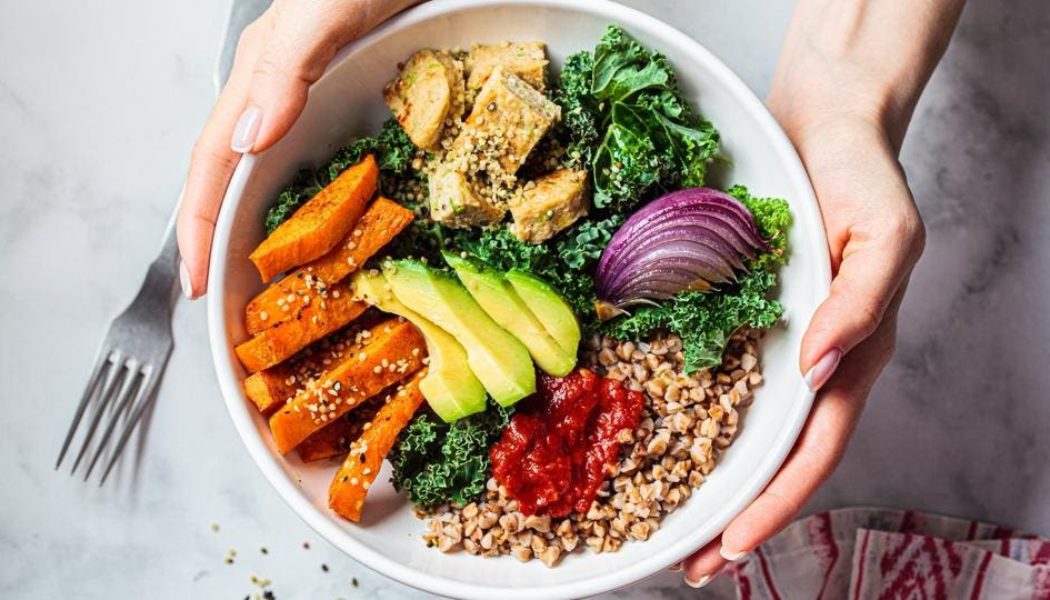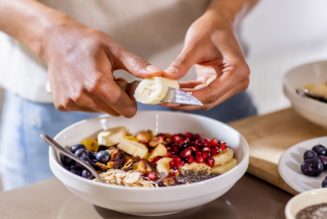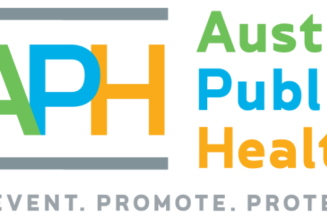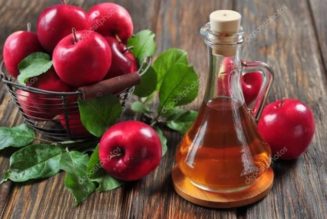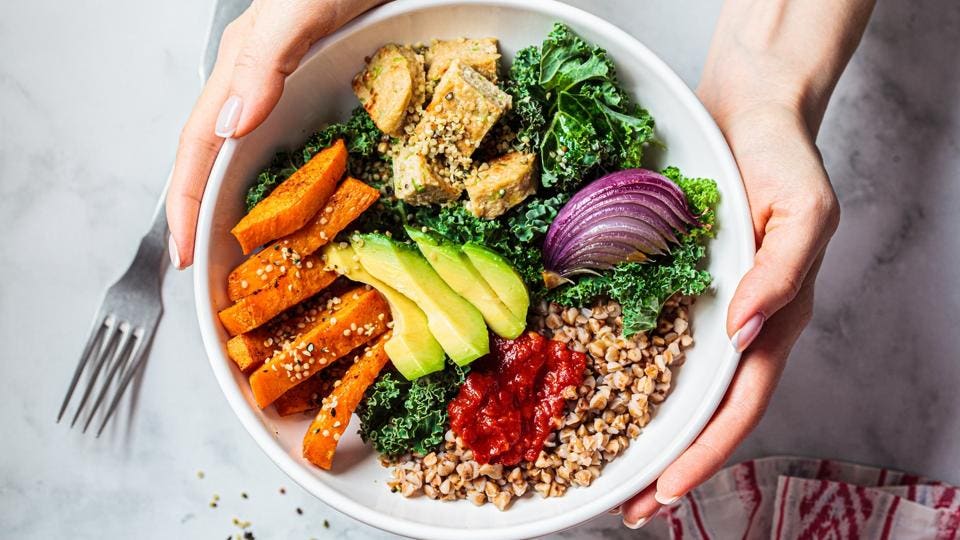
Below, registered dietitians share 14 of their favorite superfoods and what current research says about their health benefits. Incorporate more of these nutrient powerhouses into your diet to enjoy their potential health benefits.
Watercress
This under-the-radar veggie is cited by the Centers for Disease Control and Prevention (CDC) as a nutrient powerhouse—100 calories-worth of watercress provides 100% of the Daily Value (DV) of 17 key nutrients.
“Packed with antioxidants and nutrients like vitamin K, this aqueous veggie offers a unique mix of nutrients and plant compounds,” says registered dietitian Lauren Manaker, based in Charleston, South Carolina. “One such compound, called phenylethyl isothiocyanate (PEITC, for short), may have anti-cancer properties, both showing promise in preventing the initiation phase of cancer progression but also inhibiting the progression of certain tumors.”
One of Manaker’s favorite ways to eat more watercress is adding it to smoothies instead of kale or spinach. “Watercress gives my smoothie a slightly peppery kick that pairs well with pineapple and mango,” she says. “I also love including it in salads for a unique flavor boost.”
Flaxseed
Ground flaxseed, or flaxmeal, is a superfood because it’s high in fiber—which is important for gut health and regularity. It’s also a great source of omega-3 fatty acids, especially for people who don’t consume fish weekly, says Mona Cabrera, a California-based registered dietitian specializing in weight management.
Madeleine Putzi, a registered dietitian from Pittsburgh, agrees. Just 1 tablespoon provides nearly 10% of the recommended dietary intake for fiber. Flaxseeds are also rich in healthy fats, protein and polyphenols, which are compounds linked to lower cholesterol and blood pressure and lower risk of certain cancers and chronic diseases, she adds.
Sprinkle flaxseed on hot or cold cereal, add a spoonful to your smoothies or mix a tablespoon into 3 tablespoons of water to replace an egg in baking, suggests North Carolina-based clinical dietitian Lori McCall. “Always use ground flaxseed (also called milled flax meal) instead of whole flaxseed so that your body can access all those nutritional goodies inside the tough outer hull,” she adds.
Eggs
“Eggs are an all-around nutrient powerhouse with high-quality protein and essential vitamins and minerals for healthy living,” says Mackenzie Burgess, a Denver-based registered dietitian nutritionist and recipe developer at Cheerful Choices.
“And, yes—you can, and should, eat the yolk,” advises Burgess, who is a nutrition partner for the American Egg Board. “Nearly half of an eggs’ protein and most of its vitamins and minerals—including those essential for supporting our brains and bodies—are found in the yolk.”
The yolk also contains a powerful nutrient called choline, which can be difficult to find in large quantities in many foods, explains Burgess. “The choline found in eggs can help support lifelong brain health including memory, thinking, mood and more.” Plus, as a bonus, research suggests eggs may help improve absorption of nutrients found in vegetables, such as vitamin E and carotenoids.
Worried about cholesterol? Healthy people can have up to one whole egg per day as part of a heart-healthy diet, according to the American Heart Association.
Oats
“Oats are a great source of fiber, making them heart healthy and an important diet component for people with pre-diabetes or type 2 diabetes,” notes Colleen Wysocki, a California-based registered dietitian and owner of ZEST Nutrition. In fact, the American Heart Association states that the type of fiber found in oats can help lower the risk of heart disease, stroke and diabetes.
Specifically, whole grain oats can help lower LDL blood cholesterol. A type of soluble fiber in oats, known as beta-glucan, instructs the liver to pull LDL cholesterol out of the blood, says Wysocki. “Then, it [beta-glucan] binds to some of the cholesterol in the gut, keeping it from ever reaching the bloodstream.”
Eating at least 3 grams of beta-glucan daily as part of a diet low in saturated fat and cholesterol may help reduce the risk of heart disease, according to the Food and Drug Administration (FDA). One bowl of oatmeal—or about a half cup of raw rolled oats—provides about 1.5 grams.
Wysocki recommends going beyond oatmeal and adding oats to pancakes, baked goods or homemade granola bars. Oats also work well as a flour substitute in meatballs, she says.
Yogurt
“Yogurt is a great source of protein and calcium and one of the best sources of probiotics,” notes Lindsay Cohen, a registered dietitian based in St. Louis, Missouri. “Probiotics are beneficial bacteria that live in the gut and can help to improve digestion and immune function.”
A 2021 review of yogurt and other cultured fermented milk products found that consuming fermented dairy is associated with improved gastrointestinal, cardiovascular and bone health, improved weight maintenance and reduced risk of certain types of cancer.
“For a sweet and satisfying treat, try combining 4 ounces of nonfat plain Greek yogurt with 2 tablespoons of powdered peanut butter and top with some berries, dried cranberries or a few chocolate chips,” suggests Cohen.
Kale
Kale is a plant-based source of calcium and is loaded with vitamins C, E, K and B vitamins, along with dietary carotenoids like lutein and zeaxanthin. Due to its vast amount of nutrients, it’s no surprise kale often comes to mind at the mention of superfoods.
Lisa Andrews, a Cincinnati-based registered dietitian, is a fan of kale because it supports brain health. Kale is a good source of folate, alpha-tocopherol and other phytonutrients that are associated with brain health and lower rates of cognitive decline. In one study of 960 older adults, consuming about one serving of green leafy vegetables daily was associated with slower cognitive decline.
A systematic review of studies also found that higher intakes of green leafy vegetables (including kale) may promote higher levels of optimism and self-efficacy, and may also protect against depressive symptoms, adds Andrews.
Beans
Packed with plant-based protein, antioxidants, fiber and rich in folate, iron and magnesium, beans are the ultimate superfood, says Sarah Bullard, registered dietitian at UNstuck Nutrition in east Texas. The fiber in beans helps you stay full longer and helps manage blood sugar, she adds.
Research suggests the antioxidants in black beans may help lower the risk and slow progression of chronic disease, according to Bullard. One specific flavonoid found in black beans, anthocyanin, is associated with improved insulin resistance and inflammation levels.
“If you are new to legumes, start small and gradually increase your intake over weeks to ease any gut discomfort, as bloating can sometimes be a problem,” advises Shyamala Vishnumohan, Ph.D., food scientist and certified prenatal dietitian based in Perth, Australia. “Soaking dried legumes and throwing the water away can [help] ease digestion [issues]. Canned options offer convenience without compromising on nutrition.”
Chia Seeds
“Chia seeds are a nutritional powerhouse, packing a punch with healthy omega-3 fatty acids, polyunsaturated fatty acids, dietary fiber, proteins, vitamins and essential minerals,” says Steph Magill, a registered dietitian specializing in sports and performance nutrition. “What’s more, these tiny seeds are a rich source of polyphenols and antioxidants, supporting your overall health.”
Magill also loves that chia seeds contain antioxidant compounds that may protect heart and brain health.
Casey Atwood, a registered dietitian in Arkansas, appreciates chia seeds’ ability to absorb liquid and form a gel-like consistency, which adds texture to a variety of dishes. “Mix them into yogurt, oatmeal or create a chia seed pudding for a nutritious and energy-boosting breakfast,” she suggests.
Walnuts
“Walnuts are packed with antioxidants, and research suggests walnut consumption may be associated with improved cognitive function,” notes Manaker, who is a partner with the California Walnuts Commission. She adds that the polyphenols, tocopherols and polyunsaturated fatty acids in walnuts may contribute to walnuts’ health effects.
Walnuts are also an excellent source of the omega-3 alpha-linolenic acid, or ALA, with 2.6 grams per ounce, notes Manaker. “A 2022 literature review found that given the accumulating evidence on dietary ALA and cardiovascular-related outcomes, food sources high in ALA, such as walnuts, should be included as part of a heart-healthy dietary pattern,” she says.
Manaker recommends incorporating walnuts as a topper for yogurt or oatmeal, a protein-packed addition to salads or crushed as a coating for chicken or fish.
Alaskan Sablefish
You may have heard of the benefits of salmon and healthy fats, but Alaskan sablefish provides more of those heart-healthy omega-3s, says Caroline Thomason, a Washington, D.C.-based registered dietitian and nutrition partner with Alaskan Seafood. One 3-ounce serving provides a whopping 1,519 milligrams of the omega-3s DHA and EPA—anywhere from two to nearly five times the DHA and EPA in salmon, she adds.
“Studies have shown that EPA and DHA are important for every stage of life, from brain health to heart health,” notes Thomason.
What’s more, “sablefish comes from the glacier-fed waters in Alaska and is wild and sustainably caught, making it an environmentally-friendly superfood as well,” she adds.
Blueberries
“In just [over] 80 calories, a 1-cup serving of blueberries delivers crave-worthy flavor and beneficial vitamins and minerals, including four essential nutrients—vitamin C, vitamin K, manganese, fiber—and phytonutrients,” says Burgess, who is a nutrition partner for the U.S. Highbush Blueberry council.
Recent research shows a link between blueberries and gut health, too. A small 2023 study examining the effect of blueberry consumption on symptoms and quality of life in adults with irritable bowel syndrome or functional dyspepsia found that consuming about 1 ¼ cup of blueberries daily for six weeks relieved abdominal symptoms and other markers of well-being compared to a placebo, notes Burgess. The researchers attributed these benefits to the polyphenols in blueberries, which may have antioxidant, anti-inflammatory and neuroprotective properties.
The abundant antioxidants in blueberries may also protect brain cells, boost cognitive performance and enhance blood flow for brain and cardiovascular health, adds Julie Pace, a functional dietitian nutritionist based in Mississippi. She recommends adding a cup of these brain-boosting berries to smoothies, a yogurt bowl or as a topping on salads.
Quinoa
Quinoa is notable as a plant-based complete protein, which means it contains all of the essential amino acids, as well as its rich nutrient content, according to New York-based registered dietitian Sharon McCaskill. “It’s a valuable addition to your diet due to its high fiber, iron and magnesium content, supporting both heart health and digestion.”
A 2023 review of the health benefits of quinoa found that it may help manage blood sugar, exhibits antioxidant and anti-inflammatory activities and may support healthy cholesterol levels.
McCaskill recommends consuming more quinoa by using it as a swap for rice or pasta or adding it to soups or salads.
Sea Vegetables
“Sea vegetables like kelp, nori and wakame are nutrient-dense and sustainable foods widely used by many different cultures,” notes Cindy Chou, a California-based chef and registered dietitian nutritionist at Cancer Nutrition in a Bowl and The Sound of Cooking.
Kombu, a type of kelp that provides omega-3 fatty acids, calcium, iron, folate, magnesium, iodine and other nutrients, is a superfood commonly used in Taiwanese, Japanese, Korean and Chinese cuisines, says Chou. “A 3.5-ounce serving of kombu—one portion of a seaweed salad, for example—provides approximately 6.2 grams of fiber. That’s more than two times the amount of fiber as the same quantity of cabbage by weight.”
Not only are sea vegetables nutrient-dense, but they are also rich in compounds with potential antioxidant properties, adds Chou.
An easy way to enjoy kelp is to make a flavorful seaweed salad by seasoning pre-cut kelp with minced garlic, salt, vinegar, soy sauce and sesame oil, she suggests. Ready-to-eat kelp can be found in the frozen section at certain grocery stores.
Chou also recommends using dry kombu, which can be simmered in water to rehydrate and then cut into thin strips before dressing. “It can also be simmered in soups and stocks for added umami or braised in flavorful sauces and served as an appetizer.”
Cabbage
Cabbage is an underestimated vegetable rich in nutrients and antioxidants that deserves superfood status, says Jeanette Kimszal, a registered dietitian based in the Jersey Shore, New Jersey. Cabbage and other cruciferous vegetables provide sulforaphane, a sulfur-containing compound formed when raw cabbage is cut or crushed that is associated with heart health and decreased risk of certain cancers, she explains.
Red cabbage is also rich in anthocyanins, an antioxidant compound associated with an increase in healthy gut bacteria and decreased inflammation.
Enjoy cabbage raw in salads or coleslaw, or make it a meal by stuffing it with proteins like ground turkey, beef or veggies, suggests Kimszal. “You can also bake it into a quiche, add it to a soup or sauté,” she suggests. “Simply add some seasonings and make it a tasty side.”
